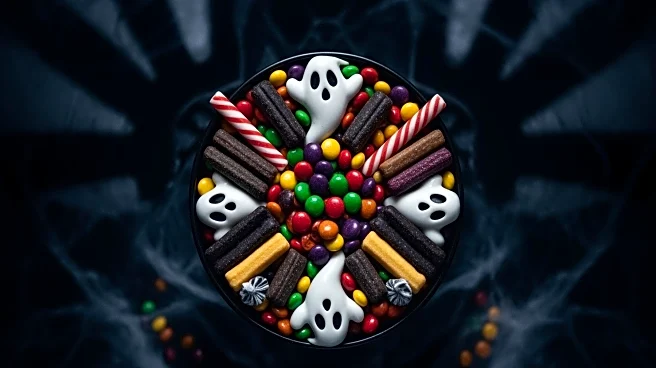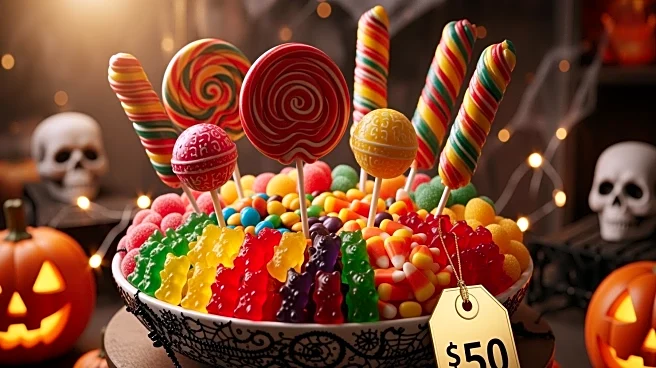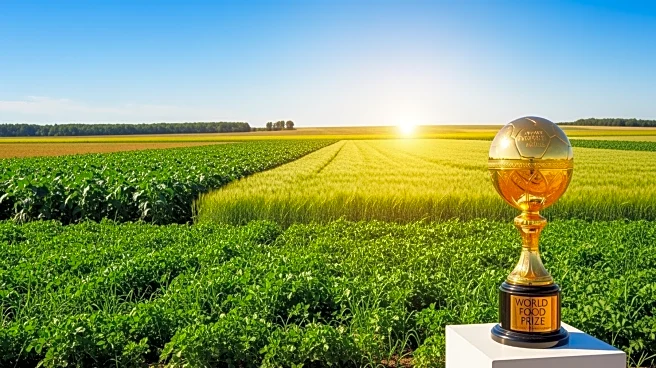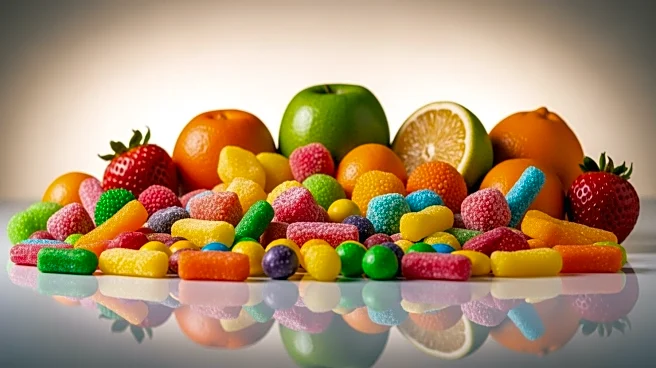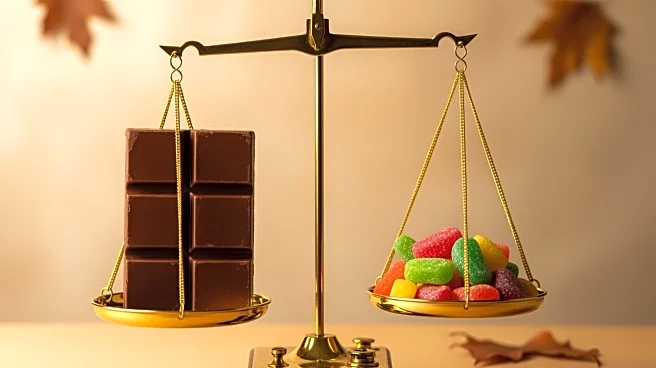What's Happening?
Halloween candy prices have increased significantly this year, with a 10.8% rise compared to last year, according to a NielsenIQ data analysis. The increase is attributed to high cocoa prices and tariffs,
impacting both specialty chocolate makers and large candy producers. As a result, consumers are seeing less chocolate content in candies and higher prices. Some manufacturers are reducing cocoa content and increasing sugar to cut costs. The trend is also leading to more non-chocolate candy options, such as gummies, which are gaining popularity among younger consumers. The cocoa price surge is linked to poor harvests in major cocoa-producing countries like Ghana and the Ivory Coast, exacerbated by climate change.
Why It's Important?
The rising cost of Halloween candy reflects broader economic challenges, including supply chain disruptions and climate impacts on agriculture. The increase in candy prices affects consumers, particularly during a holiday known for high candy consumption. It also highlights the vulnerability of global supply chains to environmental changes and trade policies. For businesses, the need to adapt to these challenges may lead to changes in product offerings and pricing strategies. The situation underscores the importance of sustainable agricultural practices and the potential need for policy interventions to stabilize commodity markets.
What's Next?
As cocoa prices remain high, candy manufacturers may continue to adjust their product lines, potentially leading to more innovation in non-chocolate candies. Consumers might see further price increases in the short term, especially as manufacturers use up existing stocks of high-cost cocoa. The situation may prompt discussions on trade policies and their impact on consumer goods. Additionally, there could be increased advocacy for sustainable farming practices to mitigate the effects of climate change on agriculture.
